
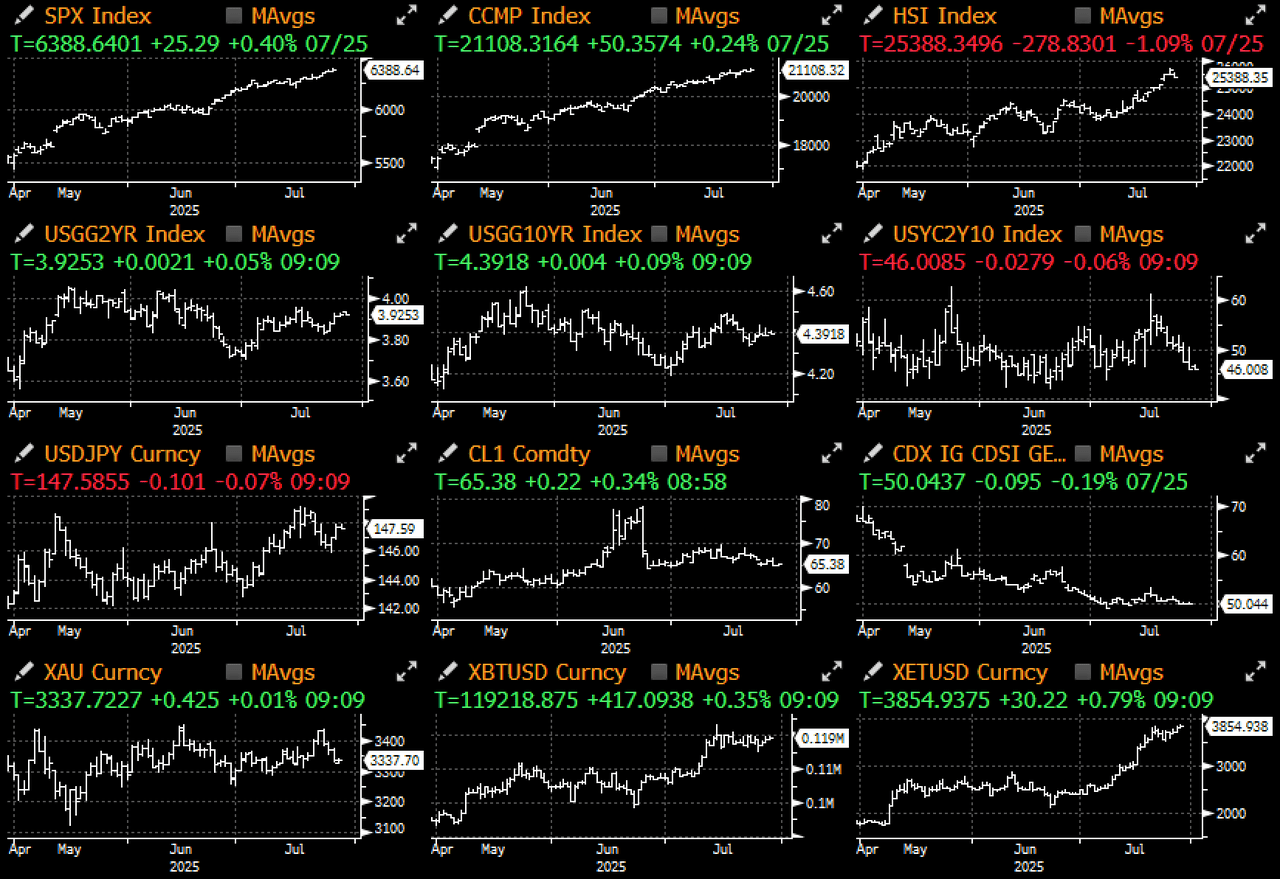
15% — this seems to have become the 'new benchmark' tariff floor for all future U.S. trade agreements. According to the latest announcements over the weekend, the EU now agrees to accept a general tariff rate of 15%, just like Japan; however, there are still some unclear details regarding energy procurement and VAT arrangements. Overall, this agreement is expected to bring about $90 to $100 billion in additional tariff revenue to the U.S. and attract around $600 billion in new investments from the European continent. If everything is realized, it would be quite a beautiful report card for the ruling authorities.
Meanwhile, the United States has once again announced a 90-day extension for tariffs on China; however, the market remains cautious about whether a substantial breakthrough can be achieved between the U.S. and China, especially against the backdrop of harsh tariff conditions faced by the overall Asia (excluding Japan). This topic is still developing.
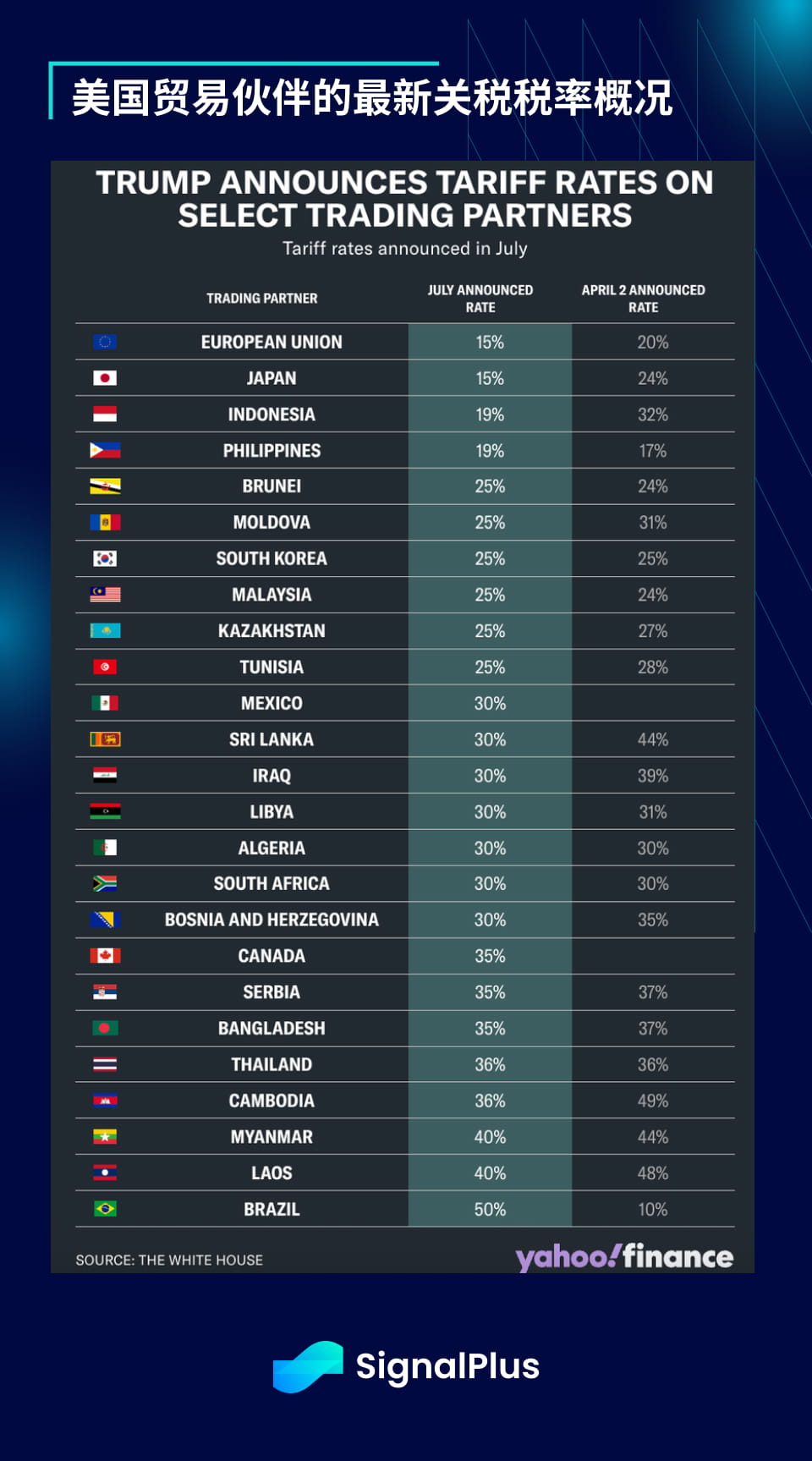
On the other hand, the stock market continues to rise strongly, hitting new highs. This is mainly benefited by corporate earnings performance that 'just meets expectations' (led by Alphabet) and a significant easing of relations between President Trump and Fed Chairman Powell. After a media-exposed visit to the Fed headquarters, Trump stated:
'Firing Powell is unnecessary, the Fed will take the right actions.'
'Powell told me the economic situation is good.'
'Powell is a very good person.'

With one of the most influential political uncertainties alleviated, the dollar has rebounded, and the yield curve flattened last week. The stock market indices in Europe and Japan also rose due to reaching an 'acceptable' trade agreement with the U.S., while stock market volatility continues to decline, showcasing one of the longest downtrends in history.
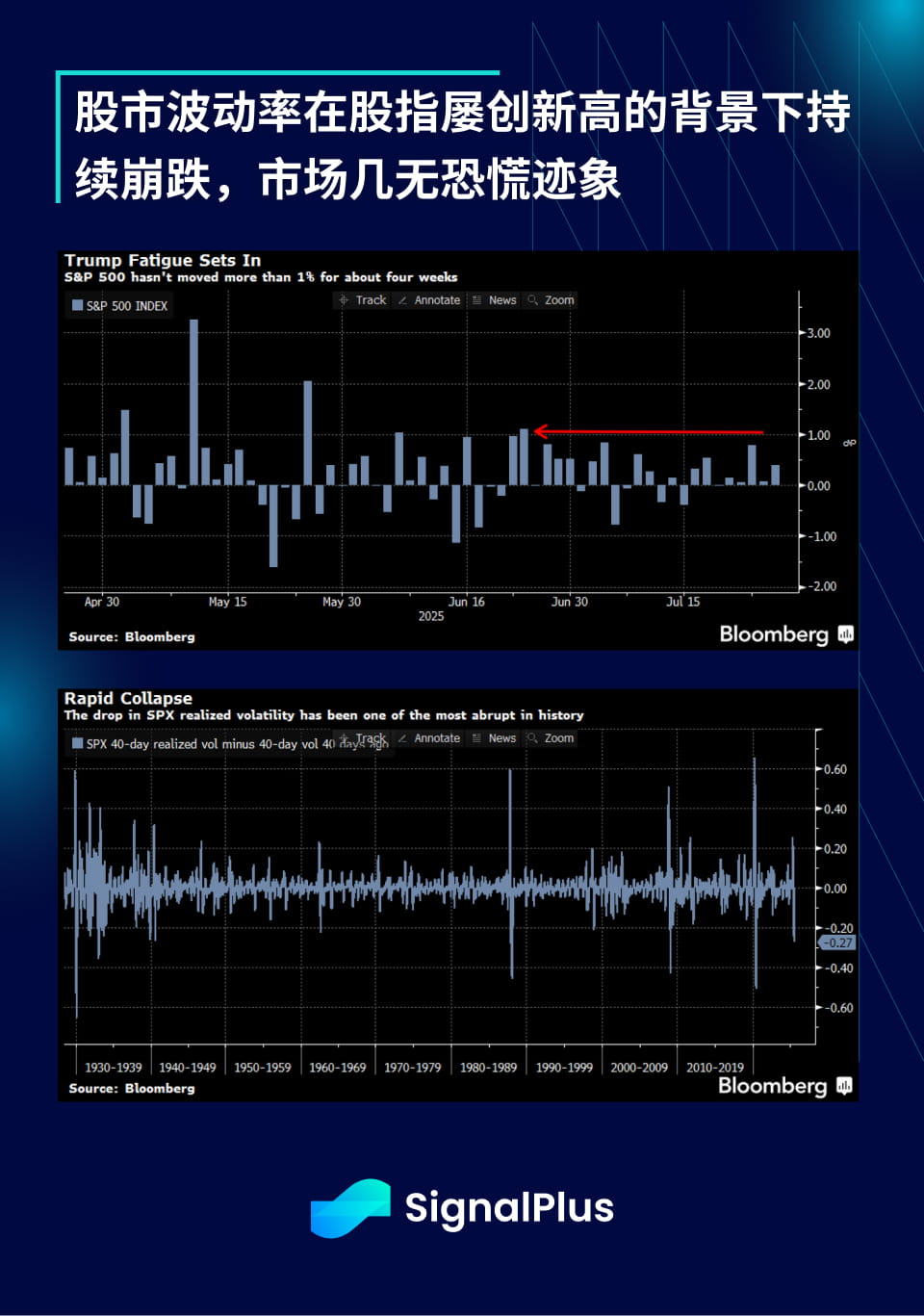
For bears, what is even less favorable is that the momentum indicators are fully breaking upwards, and the market shows good breadth, with both the benchmark index and the equal-weighted SPX index reaching new highs last week. The 13-week and 26-week moving averages have formed a golden cross, and bond traders have significantly lowered their rate cut expectations amid rising risk sentiment.
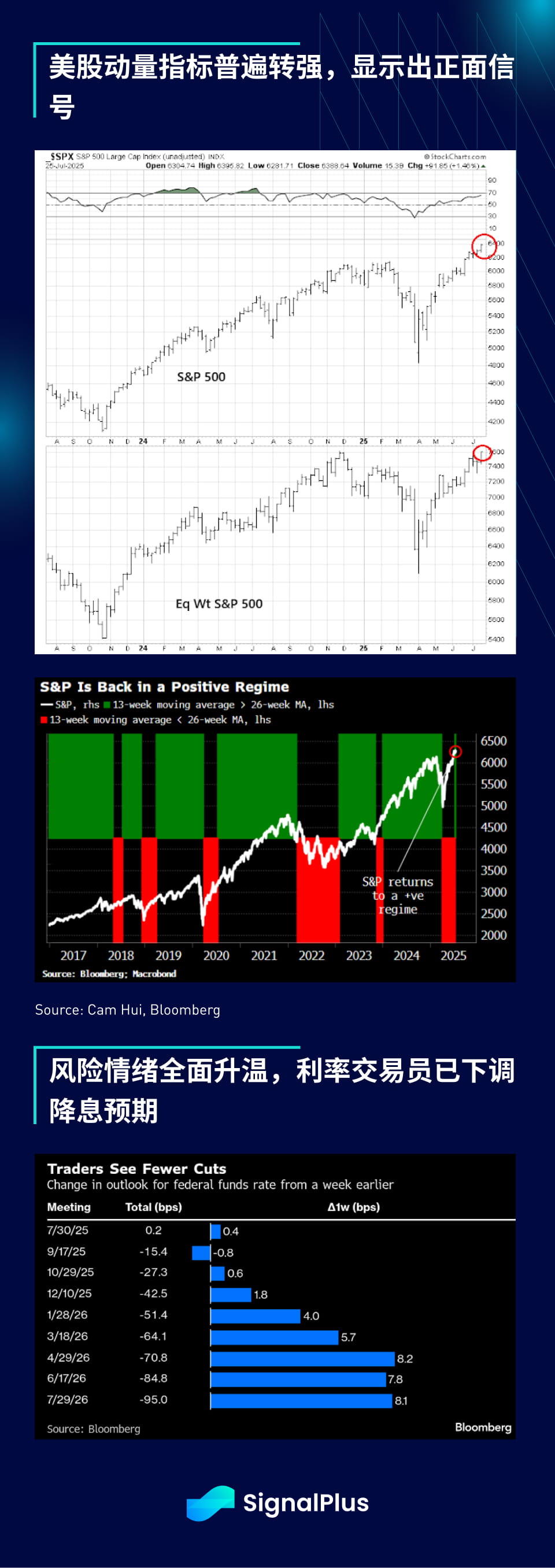
The macroeconomic and financial situation also remains favorable, as recent dovish turns from global central banks and a weakening dollar have led to a quiet rebound in M2 money supply growth, providing positive support for financial assets and fixed assets (including commodities and cryptocurrency assets).
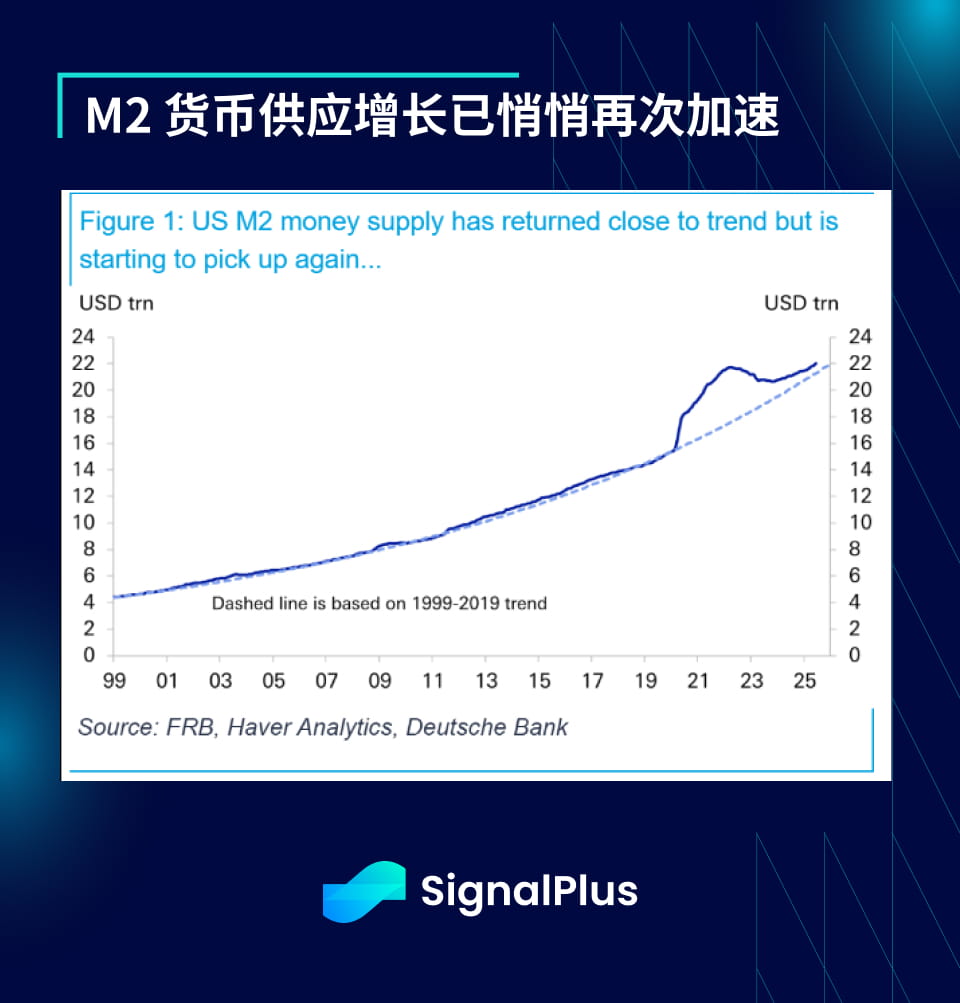
Returning to cryptocurrency, despite Galaxy Digital reporting that an investor from the 'Satoshi era' realized profits amounting to $9 billion, the market hardly showed any volatility, with BTC steady around $120,000 and ETH returning to the $4,000 mark. This wave of OG selling pressure was offset by record-high inflows into spot ETFs, with cryptocurrency assets seeing net inflows for 14 consecutive weeks, totaling a net inflow of $27 billion year-to-date, with weekly net inflows also reaching nearly $4.4 billion.
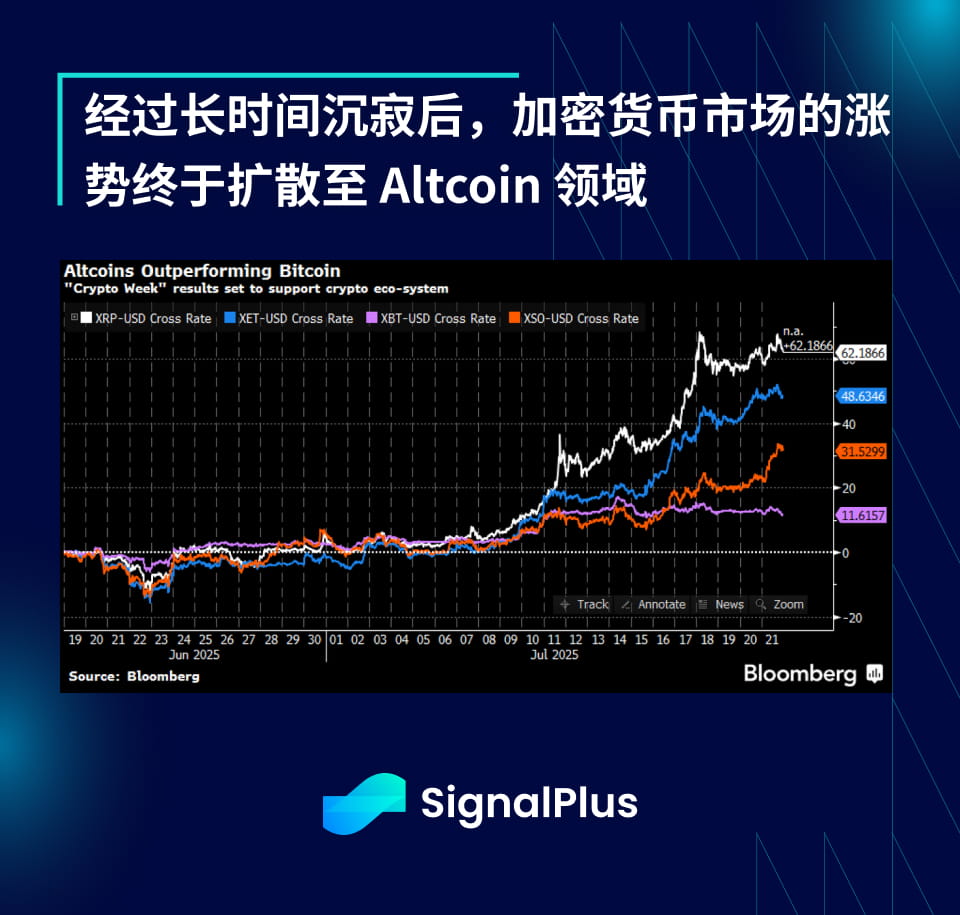
The ETF spot trading volume continues to hit new highs, with weekly trading amounts nearing $40 billion, among which ETH has performed most prominently with inflows reaching $2.1 billion, almost double the previous record, and cumulative inflows since the beginning of the year have reached $6.2 billion. Over the past three and a half months, the total asset size of ETH ETFs has increased by nearly 25%.
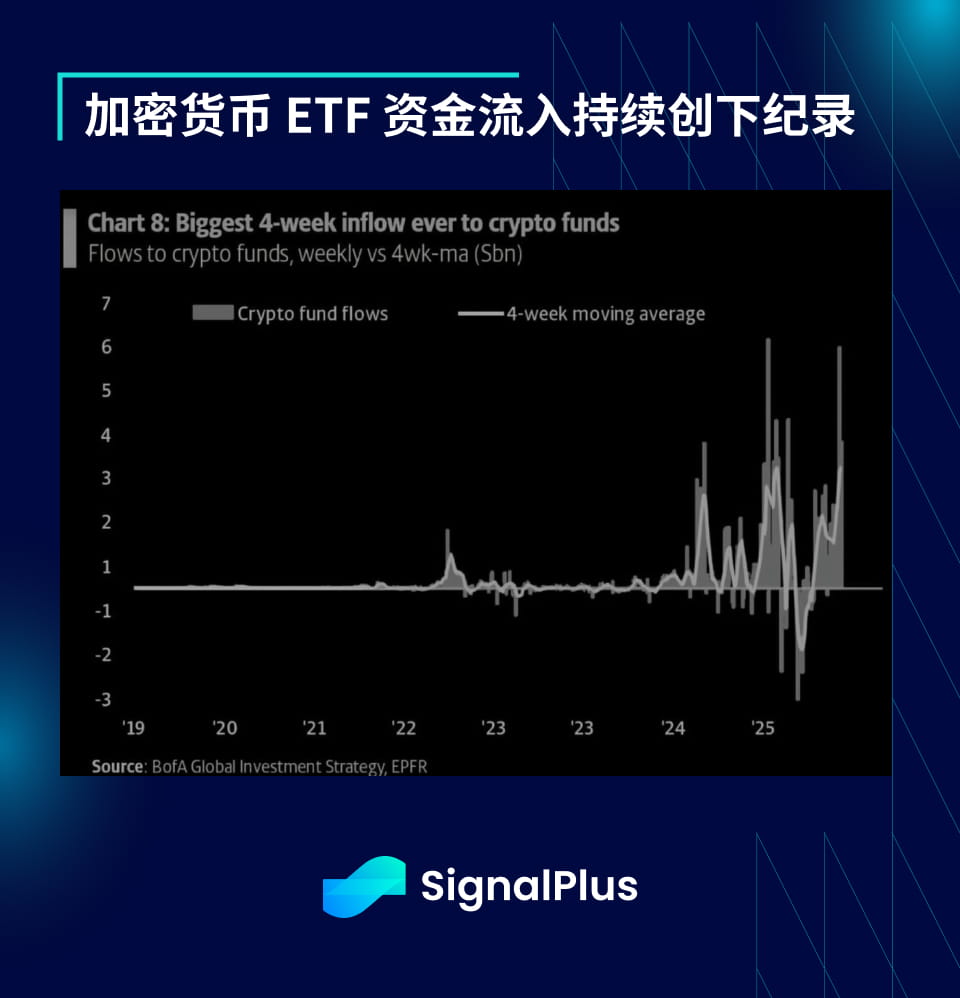
ETF inflows are still almost entirely dominated by the U.S., accounting for over 97% of the total weekly inflows. The narrative adopted by mainstream institutions remains very hot, with Goldman Sachs and BNY Mellon announcing a partnership to use Goldman Sachs' 'GS DAP' platform to process some tokenized BNY funds. Although this move is a positive development for the industry as a whole, it is more noteworthy when considering a statement within the official announcement:
BNY will continue to 'maintain the official books, records, and settlements of the funds according to the currently approved guidelines.' -- Bloomberg
In other words, the ultimate legal and operational decision-making power still lies within the existing 'paper system', which is not completely aligned with the future envisioned by DeFi / on-chain native users, but this is probably the price of mainstreaming.
Looking ahead, the market does appear to be somewhat overheated (but which asset class isn’t?), Bloomberg points out that an increasing portion of the current BTC rally is coming from expectations of 'monetary policy', i.e., dovish liquidity prospects. We don't have particularly strong views on this dissection, but it is worth noting that gold prices appear to be quite weak after multiple failed attempts to break through, and if they short-term retreat to the $3000 – $3200 range, it may have some drag on BTC.
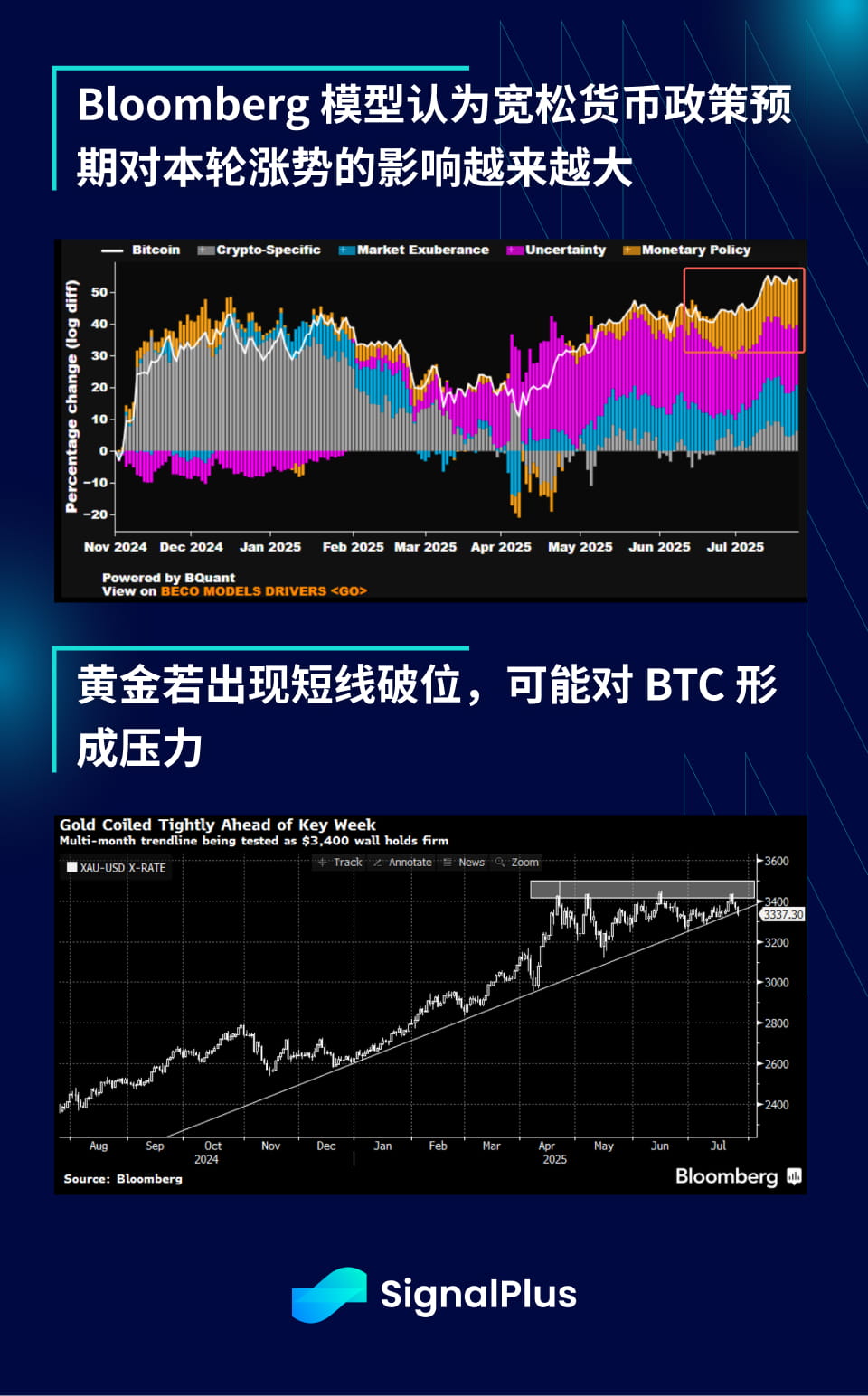
That said, going with the trend is still the way to go (please do your own research DYOR), we still advise avoiding counter-trend operations. Maintain your belief and enjoy this summer until new signals are received. Good luck and happy trading to everyone!


